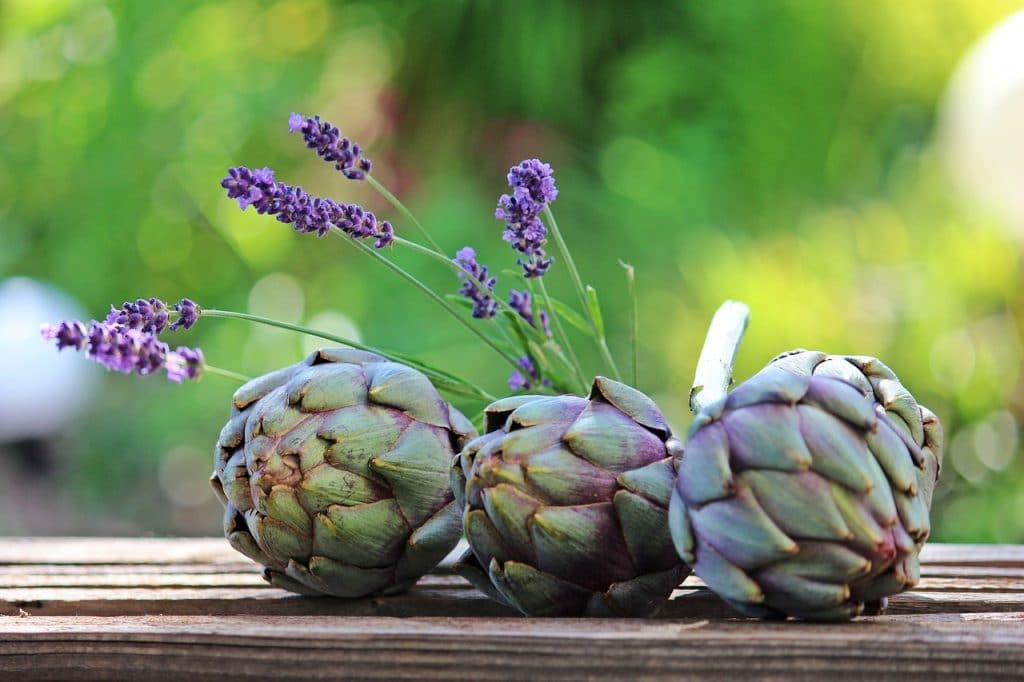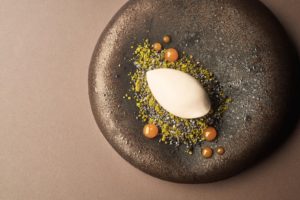A miracle of nature, the artichoke is amazing and succulent in many ways. Small or big, green or purple, the artichoke deserves delicacy and attention. Zoom on this vegetable-flower.
The artichoke known as Cyanara scolymus
The artichoke is a plant of the Asteraceae family belonging to the genus Cynara.
The name “artichoke” refers to the whole plant and its edible part, which is also called artichoke head. The word, which appeared during the Renaissance, is borrowed from its Arabic name الأرضي-شوكي (ʾarḍiyy šawkiyy) through the Lombard articiocco.
Native to the western Mediterranean, the artichoke is a botanical evolution of the thistle. The artichoke is available all year round even if it is at its best from March to September.
A vegetable plant recognized for its many virtues, the artichoke as we consume it is in reality the flower bud belonging to this plant. The flower has a fleshy bottom and bracts, mistakenly called leaves. As for the base, also fleshy, known as the artichoke heart, it can also be eaten.
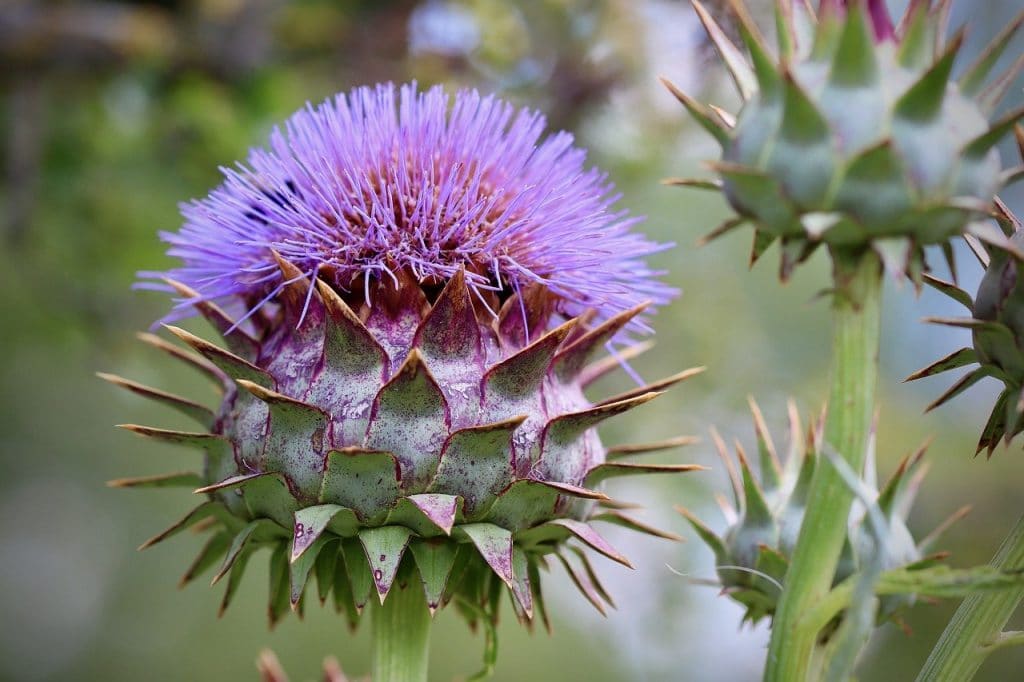
Artichoke, the superfood!
If the artichoke is a slimming ally – because of the feeling of satiety it provides and its role in regulating transit – it is also to be favoured to take care of one’s health. The artichoke indeed promotes the absorption of nutrients that our body needs to fill up with energy. And the spring season is just the perfect time to cleanse your body.
The artichoke is a reservoir of vitamins A, B, C and folic acid. It is remineralizing. It contains phosphorus, manganese, potassium, calcium and iron, the contribution of which is not negligible (0.67 mg / 100 g).
Its dietary fibre content makes it an appreciable food to fight against constipation. Nutritious, energetic, it is also stimulating and purifying. The artichoke can be recommended in cases of asthenia, hepatic disorders and renal insufficiency. Especially if it is consumed raw or as an infusion. The leaves of the artichoke indeed contain cynarin, a substance with a small astringent flavour with purifying functions, ideal for stimulating the liver and the gallbladder but also diuretics to eliminate toxins from our sometimes congested bodies and stimulate the biliary secretion, awaking our lazy livers.
On the digestion side, it’s all good. Our intestinal flora adores it because of the presence of inulin, a sugar allowing beneficial bacteria in the intestine to develop and strengthen (prebiotic effect).
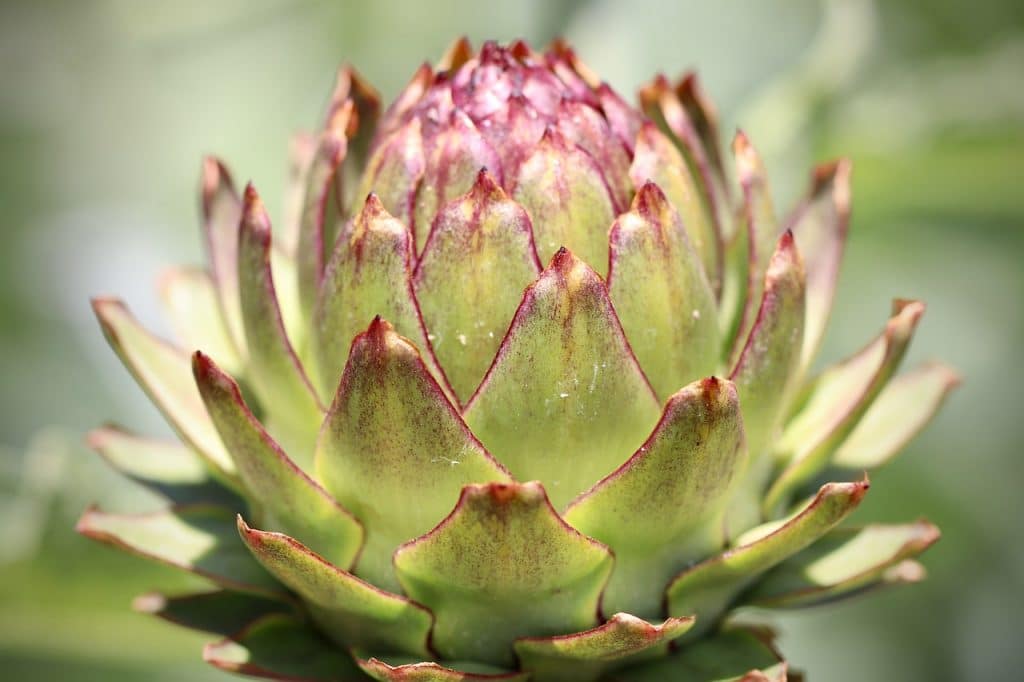
A very French artichoke
Finistère and Côtes-du-Nord produce 75% of French artichokes. The South-East (Pyrénées Orientales, Bouches-du-Rhône, Var and Vaucluse) provides the majority of the rest of the production.
In France, we mainly find white and purple artichokes, with 11 varieties listed in the official French catalogue.
Among the most commonly used varieties, we will find:
- The “ Camus de Bretagne ”. With its grey-green leaves in the shape of scales, it is the largest (also the best known) of the artichokes. It is mainly cultivated in the West of France. Its flavour is tender, and its heart melting.
- The “ Gros vert de Laon ”. Sometimes nicknamed “cat’s head” with its pointed leaves and rounded head, its flavour is fine. It is more readily found in the North and East because of its resistance to cold.
- The “ Macau ”. If its taste and flavour are close to those of “Camus de Bretagne”, its resemblance ends there. It is cultivated rather in the South-West and is differentiated by a lighter foliage.
- Still in the south, but more in the East, the “ Vert de Provence ”. Cultivated in the South, this variety is eaten raw.
- Its cousin the “ Violet de Provence ” finds a land of predilection in the Mediterranean region. With its small purple head, it is often found on the markets under the name of “artichoke bouquet”. It is excellent raw or cooked.
- Less well known, the “ Salambo ”, cultivated in Roussillon, flourishes in very sunny regions.
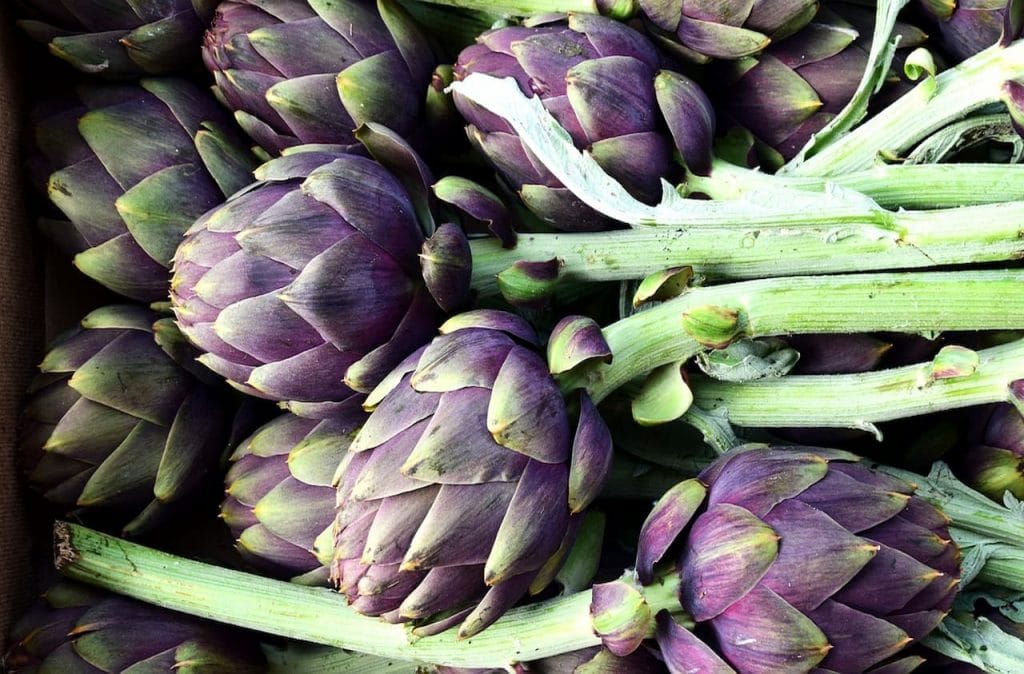
How is the artichoke eaten?
To consume an artichoke requires that you take your time. One by one, leaves and bracts are removed, in a delicate ritual that requires patience and concentration. The heart is deserved since it is necessary to pass all the stages before arriving there.
A sign of good health… the stem must not be dried out. The heads of white artichokes should be compact, with leaves without spots and tightly packed. For purple artichokes, the leaves should be prickly.
Artichokes are almost always eaten cooked. Cold, it delights us with a vinaigrette; lukewarm, stuffed, in a salad or in a pie… Its little cousin, the purple one, is excellent raw. With a hint of sauce, it keeps all its promises. It can also be eaten crunchy with salt.
Our advice: Prefer heavy and firm artichokes, with very tight and very brittle leaves. Raw, keep them in your crisper. Once cooked, eat them within 24 hours. If the artichokes are not ready, let them ripen by dipping the tail in water at room temperature.
The Greenquest Italian Artichoke Hearts
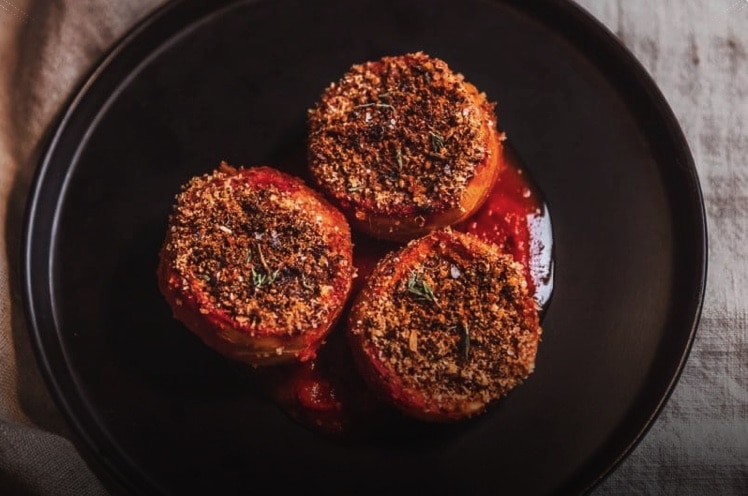
The artichoke, the vegetable with the heart of a flower
Recipe by Aude Richard50
minutesIngrEdients
- Sauce
420g tomato sauce
200g water
2 cloves garlic
1/2 tsp oregano
1/2 tsp of Provence herbs
1/8 tsp baking soda
2 tbsp of sugar or maple syrup
2 pinches of salt
10 artichoke hearts
- Garnish
45g breadcrumbs
15g malted yeast
3g of salt
1 clove of garlic
Olive oil
PrEparation
- In an ovenproof pan, add all the ingredients for the sauce and place the artichoke hearts.
- Close the lid and cook over medium heat for 15 minutes (so that small bubbles appear without letting it boil)
- Meanwhile, prepare the filling by mixing the breadcrumbs, grated garlic, malted yeast and salt.
- When the artichokes are tender, spread the breadcrumb mixture over each one.
- Drizzle with olive oil and cook (uncovered) for 20 minutes at 180 ° C.
- Serve hot.
Notes
- Find all of The Greenquest’s recipes on: www.instagram.com/the_greenquest/
Translated by Malvika Kathpal


